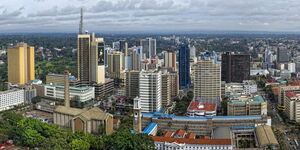So far, the government has shut down 773 health facilities and downgraded over 300 of them due to non-compliance and poor service delivery.
You may be wondering what process the government uses to decide which facilities to shut down and which to allow to continue operating. Well, Ouma Oluga, Medical Service Principal Secretary, has explained the process step by step.
You may be interested to know that the revocation process begins when the health facility is registered. When someone applies to register a health facility, the registrar starts scrutinising the application.
During an interview on Tuesday, the PS explained that the applicant selects a suitable location, builds or modifies the structure, and decides on the services to offer.
After applying, a sanitation inspection, usually conducted by the county government, is done to ensure the facility meets waste management and public health standards.
‘’There are some rules about where a facility can be, and which kind of facility. A clinic must be in a specific location, similar to a maternity clinic; you must meet those rules,’’ the PS explained.
After the sanitation report is done, the owner applies to the medical council, which looks at the sanitation report and then sends their inspectors, who are trained medical practitioners from the Kenya Medical Practitioners and Dentists Council (KMPDC). The inspectors vary, from building to service and plans.
‘’The inspectors look at three things, one, they look at the infrastructure, the services, then categorize you according to the services you offer,’’ he continued.
Relocating Equipment
Now, this is where most Kenyan facilities fail the evaluation test, as explained by Oluga. The PS reveals that while most facilities pass the test, after receiving their licences, they remove most of the equipment and use them to open another branch, leaving the facility that had been granted a practice license desolate, and exposed to revocation.
"One year down the line, they transfer the equipment, and even the hospital and nurses they had registered to open another facility. Now, what was documented as having been available is no longer available. What happens next, the licence has to be revoked and the facility shut down," the PS continued.
If fraud is confirmed, legal procedures are followed under the Social Health Insurance Act. The facility is gazetted, and the case can be referred to the Directorate of Criminal Investigations for prosecution.
“We have to collect this data, get a report from the regulator, Gazette it, and then follow through," Oluga stressed.
The PS noted that these measures are essential to ensure accountability, prevent cheating, and protect both patients and public funds. They also rely on societal cooperation, as dishonesty in claiming services remains a challenge.
The PS explained that the problem goes beyond health facilities, but a general Kenyan culture of cheating.












